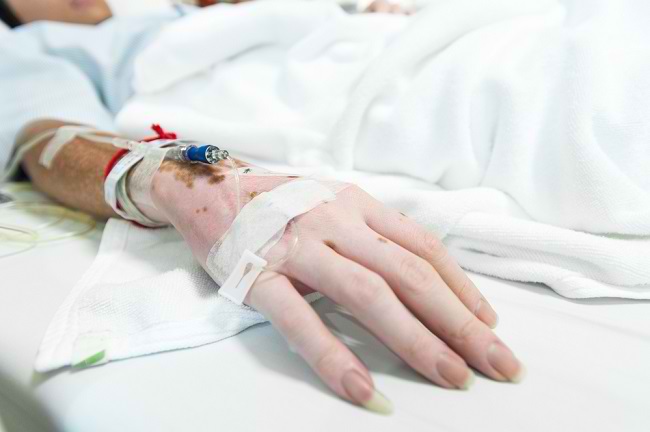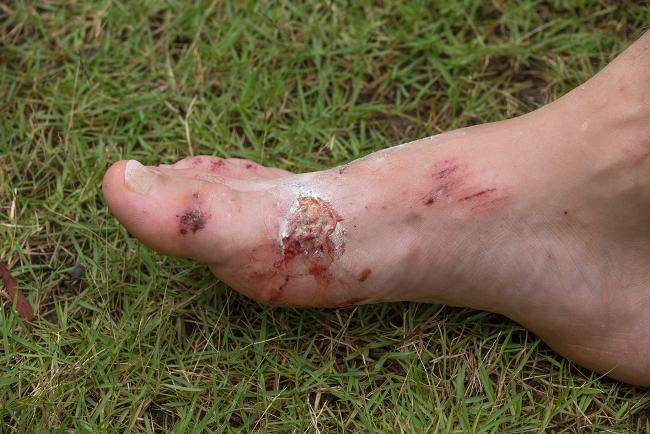Quetiapine is an antipsychotic drug that is useful for treating mental disorders, such as schizophrenia, bipolar disorder, or depression. This drug is available in 2 forms, namely: tablet immediate-release and extended-release. Quetiapine should only be used with a doctor's prescription.
Quetiapine tablets immediate-release will release the active substance into the bloodstream directly, while the tablets extended-release release its active substance into the bloodstream gradually. Quetiapine tablets extended-release can be combined with other antidepressant drugs, to treat major depression.

Trademark quetiapine: Quetvell, Seroquel, Seroquel XR, and Soroquin XR
What is Quetiapine
| group | Antipsychotic drugs |
| Category | Prescription drugs |
| Benefit | Treating schizophrenia, bipolar disorder, and depression |
| Used by | Adults and children over 10 years old |
| Quetiapine for pregnant and lactating women | Category C: Animal studies have shown adverse effects on the fetus, but there are no controlled studies in pregnant women. The drug should only be used if the expected benefit outweighs the risk to the fetus. Quetiapine can be absorbed into breast milk. If you are breastfeeding, do not use this medicine without consulting your doctor first. |
| Shape | Tablet |
Precautions Before Using Quetiapine
Quetiapine should not be used carelessly. Follow the doctor's advice while undergoing treatment with this medicine. Before taking quetiapine, you need to pay attention to the following:
- Tell your doctor if you have a history of allergy to quetiapine or any other drug allergy.
- Tell your doctor if you are taking any other medicines, including supplements and herbal products.
- Tell your doctor if you are pregnant, plan to become pregnant, or are breastfeeding.
- Tell your doctor if you have dementia. Quetiapine should not be used in psychosis due to dementia.
- Tell your doctor if you are taking quetiapine before having surgery, including dental surgery.
- Do not drive, use machinery, or do activities that require alertness, while you are taking quetiapine, as this medicine may make you dizzy or drowsy.
- Do not consume alcoholic beverages while on treatment with quetiapine, as this can increase the risk of fatal side effects.
- Do not use quetiapine for children younger than 10 years.
- Avoid excessive exercise or doing outdoor activities while taking quentiapine, because this drug can put you at higher risk of developing heat stroke.
- Tell your doctor if you have or have had liver disease, heart disease, hypertension, hypotension, low white blood cell count, diabetes, difficulty swallowing, hypercholesterolemia, enlarged prostate (BPH), glaucoma, constipation, and seizures.
- Call your doctor right away if you have an allergic reaction to the drug or overdose after taking quetiapine.
Dose and Rules of Use Quetiapine
Quetiapine should only be used as prescribed by a doctor. The dose of quetiapine varies, depending on the type of preparation, the condition to be treated, and the age of the patient.
For preparation extended-release The administration will be done once a day with the same dose as the preparation immediate-release. The following is the distribution of quetiapine doses based on the patient's condition:
Condition: Schizophrenia
Tablet immediate-release for adults:
- Day 1: 25 mg, 2 times daily
- Days 2 and 3: the dose is increased to 25–50 mg, divided 2–3 times daily
- Day 4: 150 mg 2 times a day. After day 4 the dose can be adjusted according to the patient's response.
- Maximum dose: 750 mg per day
Tablet immediate-release for children >12 years old:
- Day 1: 50 mg, 2 times a day
- Day 2: 100 mg, 2 times a day
- Day 3: 200 mg, 2 times a day
- Day 4: 300 mg, 2 times a day
- Day 5: 400 mg, 2 times a day
- Maintenance dose: 400–800 mg per day, divided into 2 or 3 doses
- Maximum dose: 800 mg per day
Condition: Bipolar disorder mania episode
Tablet immediate-release for adults:
- Day 1: 100 mg, 2 times a day
- Day 2: 200 mg, 2 times a day
- Day 3: 300 mg, 2 times a day
- Day 4: 400 mg, 2 times a day
- Maintenance dose: 400-800 mg per day in separate doses
- Maximum dose: 800 mg per day
Tablet immediate-release for children >10 years old:
- Day 1: 50 mg, 2 times a day
- Day 2: 100 mg, 2 times a day
- Day 3: 200 mg, 2 times a day
- Day 4: 300 mg, 2 times a day
- Day 5: 400 mg, 2 times a day
- Maintenance dose: 400-600 mg per day, divided into 2 or 3 doses
- Maximum dose: 600 mg per day
Condition: Depressive episode of bipolar disorder
Tablet immediate-release and extended-release for adults:
- Day 1: 50 mg, once daily
- Day 2: 100 mg, once daily
- Day 3: 200 mg, once daily
- Day 4: 300 mg, once daily
- Maintenance dose: 300 mg, once daily
- Maximum dose: 300 mg per day
Condition: Depression
Tablet extended-release for adults:
- Day 1: 50 mg, once daily
- Day 2: 50 mg, once daily
- Day 3: 150 mg, once daily
- Maintenance dose: 150-300 mg, once daily
- Maximum dose: 300 mg per day
How to Use Quetiapine Correctly
Follow the doctor's recommendations and instructions while taking quetiapine. If you are taking quetiapine tablets immediate-release, you can take it before or after meals.
If you are taking quetiapine tablets extended-release, you can consume it on an empty stomach without food.
Do not cut, chew, or crush the tablet. Swallow whole with a glass of water. Quetiapine should be taken regularly at the same time each day to maximize drug performance.
If you forget to take quetiapine, take it as soon as you remember. If it is near the time of your next dose, skip the missed dose and continue your regular dosing schedule. Do not double your dose of quetiapine to make up for a missed dose without your doctor knowing.
Keep taking this medicine even if you feel well. Do not stop taking the drug without consulting your doctor first.
Perform control according to the schedule given by the doctor while you are undergoing treatment with quetiapine, so that the condition of the disease and response to therapy can be monitored.
Interactions of Quetiapine with Other Drugs
Some of the interactions that may occur if quetiapine is used with other medicines are:
- Heart rhythm disturbances if taken with antiarrhythmic drugs, antipsychotics, antibiotics, pentamidine, and methadone
- Increased drowsiness when taken with benzodiazepines, muscle relaxants, pain medications, antihistamines, sedatives, and barbiturates
- Decrease in blood pressure if taken with antihypertensive drugs
- Increased risk of side effects of quetiapine if taken with antifungal drugs, drugs to treat HIV, and antidepressants
- Decreased effectiveness of quetiapine when taken with anticonvulsants, rifampin, and St. John's wort
- Decreased effectiveness of medications to treat Parkinson's disease, such as levodopa, pramipexole, or ropinirole
Quetiapine Side Effects and Dangers
Some of the common side effects after using quetiapine are:
- dry mouth
- Constipation
- Stomach ache
- Dizzy
- Nauseous
- Throw up
- Weight gain
Check with a doctor if the complaints mentioned above do not go away or get worse. Call your doctor right away if you have an allergic reaction to your medication or experience more serious side effects, such as:
- Fever
- Faint
- Seizures
- Excessive sweating
- Stiff muscles
- Blurred vision
- Movement becomes uncontrollable
- Difficult to urinate
- Irregular heartbeat (arrhythmia)









